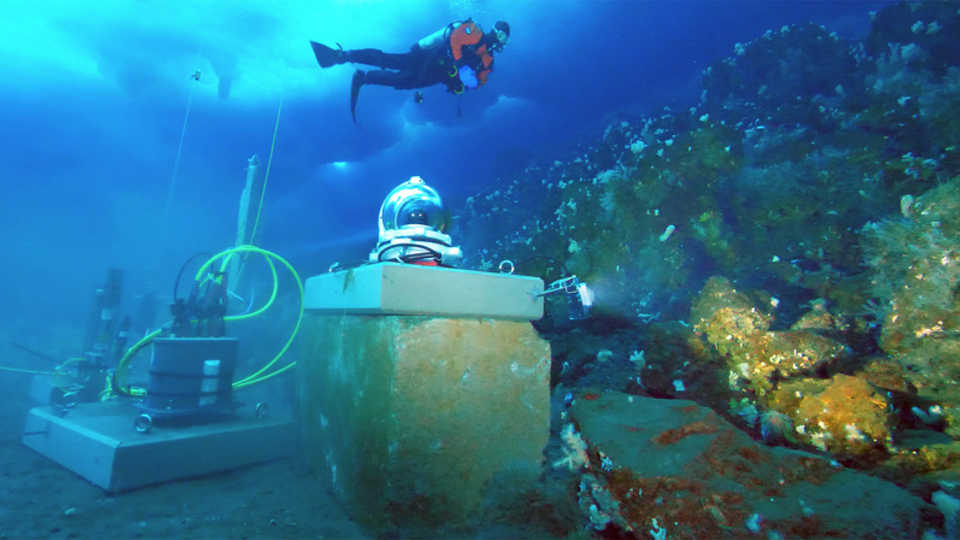
Paul Cziko swims over the MOO camera. To its left is the suite of instruments that measure oceanic conditions and the underwater microphone. Photo Credit: Paul Cziko, NSF.
Seventy feet below an eight-foot-thick layer of solid ice in Antarctica's McMurdo Sound lies a suite of sensors planted on the sea floor. It consists of a live-streaming video camera inside a self-cleaning glass dome, an HD underwater microphone, and instrumentation that continually monitors the temperature, salinity and pressure of its surroundings. The installation, known as the McMurdo Oceanographic Observatory (or the MOO), was installed by scientific divers in late 2017 with the main objective of studying how fish keep from freezing in Antarctica's frigid waters.
Controlled from 9,000 miles away at the University of Oregon, Eugene, the MOO is the first of its kind in the Southern Ocean. Its ceaseless operation provides researchers with insights into how the environment changes hour by hour as well as over an entire five-month research season. Understanding these conditions over time helps shed light on how these antifreeze protein-bearing fishes' adaptations enable their survival.
The MOO is managed by evolutionary biologist Paul Cziko and supported by the NSF which manages the U.S. Antarctic Program. In addition to gathering data for their own research, Cziko's team also intends to make all video, audio and ocean condition data from the Observatory available in real time to a worldwide audience via the internet.